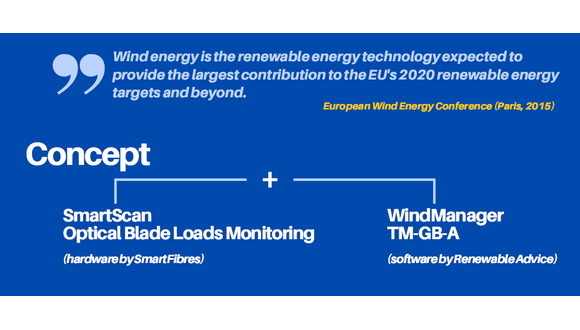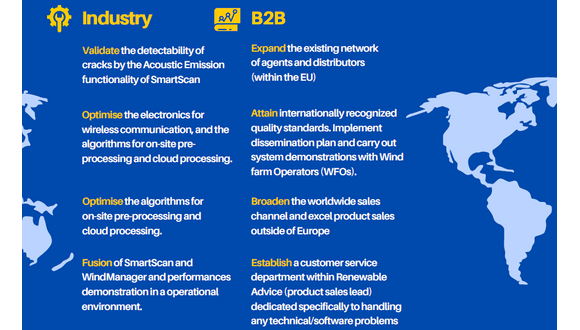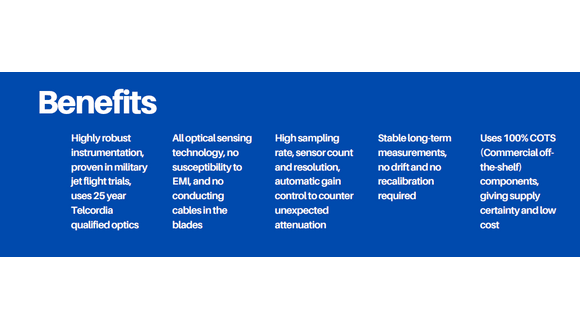Wed, 02 September, 2020
The collaborative BladeSave Project, for which TWI was part of a consortium of companies, has completed successfully.
The project sought to develop a condition monitoring system for wind turbine blades, with TWI working alongside partners, Renewable Advice (coordinator), EWT (end user, wind turbine owner), ASSIST (software, website),and Smart Fibres (hardware).
BladeSave is a fusion between a Fibre Optic Structural Health Monitoring System, which provides multi-sensing capabilities (strains, vibrations and acoustic emission), and blade management software (WindManager) to link data from inspection and maintenance to structural health monitoring data to provide a comprehensive solution for wind turbine blade monitoring, repair and management.
The project goals were to reduce the risks associated with blade failure while also contributing to the competitiveness of global wind energy production.

The objectives of BladeSave were designed to benefit both industrial and B2B initiatives through validation, optimisation, and the promotion of the system, including to agents, distributors and wind farm operators.

Wind turbine blades are susceptible to fatigue failure and environmental effects, and cracks, if left unattended, can grow and propagate leading to costly blade failures. However, condition monitoring is able to mitigate against this problem by continuously assessing the state of the blades so that any problems can be detected at an early stage and fixed quickly at a low cost.
BladeSave has undergone extensive testing, including on EWT turbine blades in the Netherlands, where the system was monitored in action over three months. TWI also undertook destructive testing on a wind turbine blade that had been fitted with the BladeSave system in order to test its effectiveness. Acoustic emission-based health monitoring enabled by fibre optic technology was demonstrated on the blade during these final tests at TWI and the technology was also successfully validated on tensile tests with glass fibre reinforced polymer (GFRP) panels, the same material that the blade was made of. Matrix cracking, de-bonding and fibre breakage defects were detected by the fibre optic acoustic emission sensors that BladeSave was using. As a result, the technical developments have all been achieved at this point.
Since BladeSave is able to ‘listen’ to the vibrations produced by the turbine blades it can detect defects earlier than other systems, meaning that repairs are smaller and any downtime is minimised.
The BladeSave system aims to increase the average annual availability of wind turbines from 95% to 98-99%, allowing component life spans to be maximised and reducing unscheduled repair, replacement and breakdown.

You can find out more about the BladeSave project in our dedicated Insight, read a Q&A with one of our experts who worked on the project, as well as see video of the destructive testing trials conducted at TWI and revisit the webinar we held about the project.
You can also find out more about the project on the website BladeSave.eu.
The BladeSave project has received funding from the European Union’s Horizon 2020 programme under grant agreement No 760353.